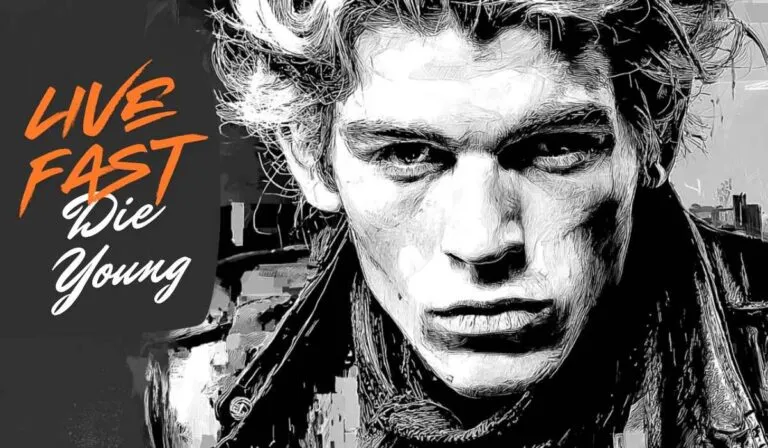Album covers often transcend their role as packaging to become iconic works of art. They merge visual expression with musical identity, shaping how audiences experience an album before hearing a single note.
Certain designs break through to influence fashion, advertising, and popular culture as a whole. Selections here are based on impact, recognizability, artistic merit, and cultural influence.
Album covers have long served as more than just packaging for music. They operate as artistic statements, marketing tools, and cultural markers that can define an era.
Some covers transcend the music itself, cementing their place in popular culture and influencing design, fashion, and social conversation.
For this list, the selection is based on four main criteria:
- Cultural influence
- Recognizability
- Artistic merit
- Overall impact
Table of Contents
Toggle10. Elvis Presley – Elvis Presley (1956)

A candid live shot of Elvis mid-performance, paired with bold pink and green lettering, gave the cover a striking presence.
It reflected the energy and charisma of a young performer on the brink of superstardom.
The design would later inspire The Clash’s London Calling cover, linking two very different eras of music history.
- Release date: March 23, 1956
- Number of tracks: 12
- Cover artist: William V. “Red” Robertson (photographer)
9. N.W.A – Straight Outta Compton (1988)

The perspective of the photographer lying on the ground as the group towers above, with Eazy-E aiming a gun, created an immediate feeling of confrontation.
It perfectly matched the lyrical content’s unflinching portrayal of life in Compton.
The cover became a definitive image for gangsta rap and influenced decades of hip-hop visual style.
- Release date: August 8, 1988
- Number of tracks: 13
- Cover artist: Eric Poppleton (photographer)
8. A Tribe Called Quest – The Low End Theory (1991)

A painted female figure adorned with red, green, and black body art became a bold Afrocentric statement.
The visual tied the group’s music to cultural heritage while maintaining a sleek, modern style.
Over time, it became one of hip-hop’s most recognizable symbols, often referenced in visual storytelling in modern photography and graphic design.
- Release date: September 24, 1991
- Number of tracks: 14
- Cover artist: ZombArt
7. The Clash – London Calling (1979)

Pennie Smith’s photograph of Paul Simonon smashing his bass guitar conveyed pure, unfiltered energy.
The typography, modeled after Elvis Presley’s debut album, created a bridge between rock’s early years and punk’s raw aggression.
The cover encapsulated the chaos, anger, and liberation central to the punk movement.
- Release date: December 14, 1979
- Number of tracks: 19
- Cover artist: Pennie Smith (photographer)
6. The Rolling Stones – Sticky Fingers (1971)

Featuring a close-up of jeans with a working zipper, Andy Warhol’s concept blurred the line between music, art, and fashion.
The zipper revealed underwear beneath, pushing boundaries of what album covers could depict.
It fit perfectly with the Rolling Stones’ rebellious image and added a tactile dimension to the consumer’s experience.
- Release date: April 23, 1971
- Number of tracks: 10
- Cover artist: Andy Warhol
5. David Bowie – Aladdin Sane (1973)

Brian Duffy’s portrait of David Bowie with a red and blue lightning bolt across his face captured the transformation of a music icon.
The image defined the glam rock era and became a visual representation of Bowie’s theatrical approach to music.
Its stark white background and clean lines ensured the lightning bolt became one of pop culture’s most imitated symbols.
- Release date: April 13, 1973
- Number of tracks: 10
- Cover artist: Brian Duffy
4. The Velvet Underground & Nico – The Velvet Underground & Nico (1967)

Andy Warhol’s banana design, with its “Peel Slowly and See” feature, challenged conventional album packaging.
Beneath the peelable sticker lay a flesh-toned banana, adding a provocative, interactive element rarely seen at the time.
The design reflected Warhol’s pop art sensibilities and gave the album a gallery-level presence, merging music with fine art in an unprecedented way.
- Release date: March 12, 1967
- Number of tracks: 11
- Cover artist: Andy Warhol
3. Nirvana – Nevermind (1991)

A baby swimming toward a dollar bill hooked on a fishing line became a bold critique of capitalism’s early grip on innocence.
Shot underwater, the image was both humorous and confrontational, creating a visual shorthand for the band’s message.
It was endlessly parodied and remains one of the most discussed covers in modern music history.
Its rawness aligns with the grunge movement’s ethos, making it a perfect companion to the music’s rebellious energy. On top of that, it even sparked a lawsuit that Spencer Elden, 31, baby boy from the picture lost.
- Release date: September 24, 1991
- Number of tracks: 12
- Cover artist: Kirk Weddle (photographer)
2. Pink Floyd – The Dark Side of the Moon (1973)

A minimalist prism refracting light into a spectrum became one of the most recognizable images in popular music.
Designed by Hipgnosis with George Hardie, the artwork perfectly mirrored the album’s exploration of life’s cycles and human experience.
Its simplicity belied the complex themes within, turning the cover into an enduring cultural icon seen on posters, shirts, and even tattoos.
The prism design remains a prime example of how strong visual identity can elevate a record’s legacy.
- Release date: March 1, 1973
- Number of tracks: 10
- Cover artist: Hipgnosis & George Hardie
1. The Beatles – Sgt. Pepper’s Lonely Hearts Club Band (1967)

Sgt. Pepper’s presented a collage of cultural icons, literary figures, and celebrities arranged in a bright, dense pop art tableau.
Designed by Peter Blake and Jann Haworth, the cover became an instant conversation starter, offering layers of symbolism and inviting fans to decode its references.
Its visual complexity matched the musical experimentation of the record, transforming album artwork into a sophisticated art form.
It also set a new standard for the relationship between music and imagery, influencing countless artists in how they approached visual branding. Decades after, The Beatles are still present and making waves in music industry.
- Release date: May 26, 1967
- Number of tracks: 13
- Cover artist: Peter Blake & Jann Haworth
Honorable Mentions

- Fleetwood Mac – Rumours (1977): A monochrome image with minimal styling that reflected the band’s interpersonal drama.
- Prince – Purple Rain (1984): A bold purple-toned shot of Prince on a motorcycle, embodying his theatrical style.
- Joy Division – Unknown Pleasures (1979): A simple black cover with a pulsar signal graph, later a cult symbol in alternative culture.
- Bob Marley & The Wailers – Rastaman Vibration (1976): A warm-toned portrait emphasizing Marley’s connection to roots and identity.
- Kate Bush – The Dreaming (1982): A surreal depiction of Bush mid-action, enhancing the record’s mysterious tone.
The Bottom Line
These covers remain touchstones for both music and visual art. Their influence extends to modern branding, merchandise, and social media aesthetics.
Contemporary designers continue to draw on the bold choices, experimental methods, and emotional resonance established by these albums.
Each one reflects an era’s spirit while leaving a lasting mark on how music is seen as well as heard.
Related Posts:
- Why Michael Jackson's "Thriller" Continues to Be the…
- 10 Of The GREATEST Instrumental Guitar Songs Of All Time!
- All the Music Videos Where Mike Tyson Stole the Show
- Who Was the First Beatle to Release a Solo Album and Why?
- Basic Equipment List For A New Music Store
- Snoop Dogg’s Luxurious Lifestyle - What Does the Rap…












